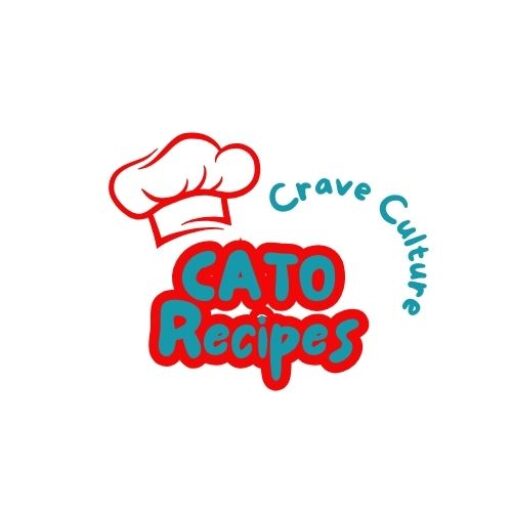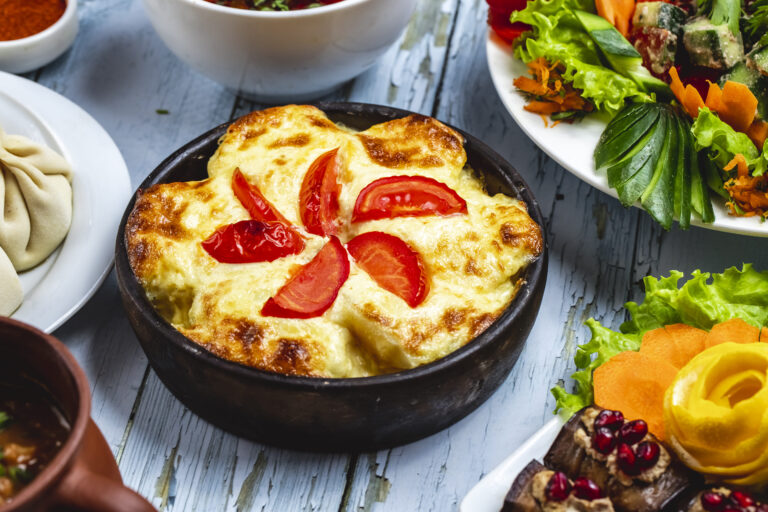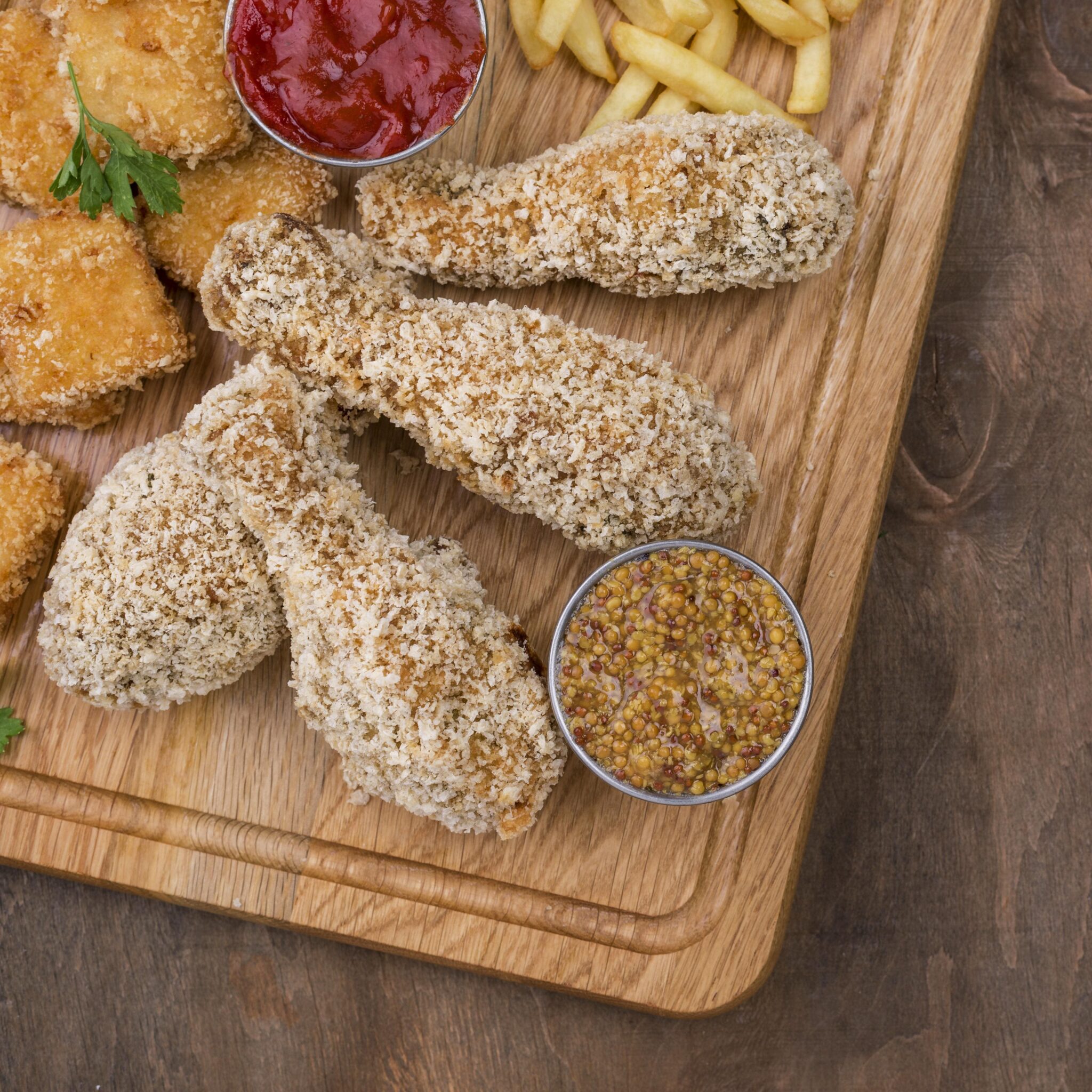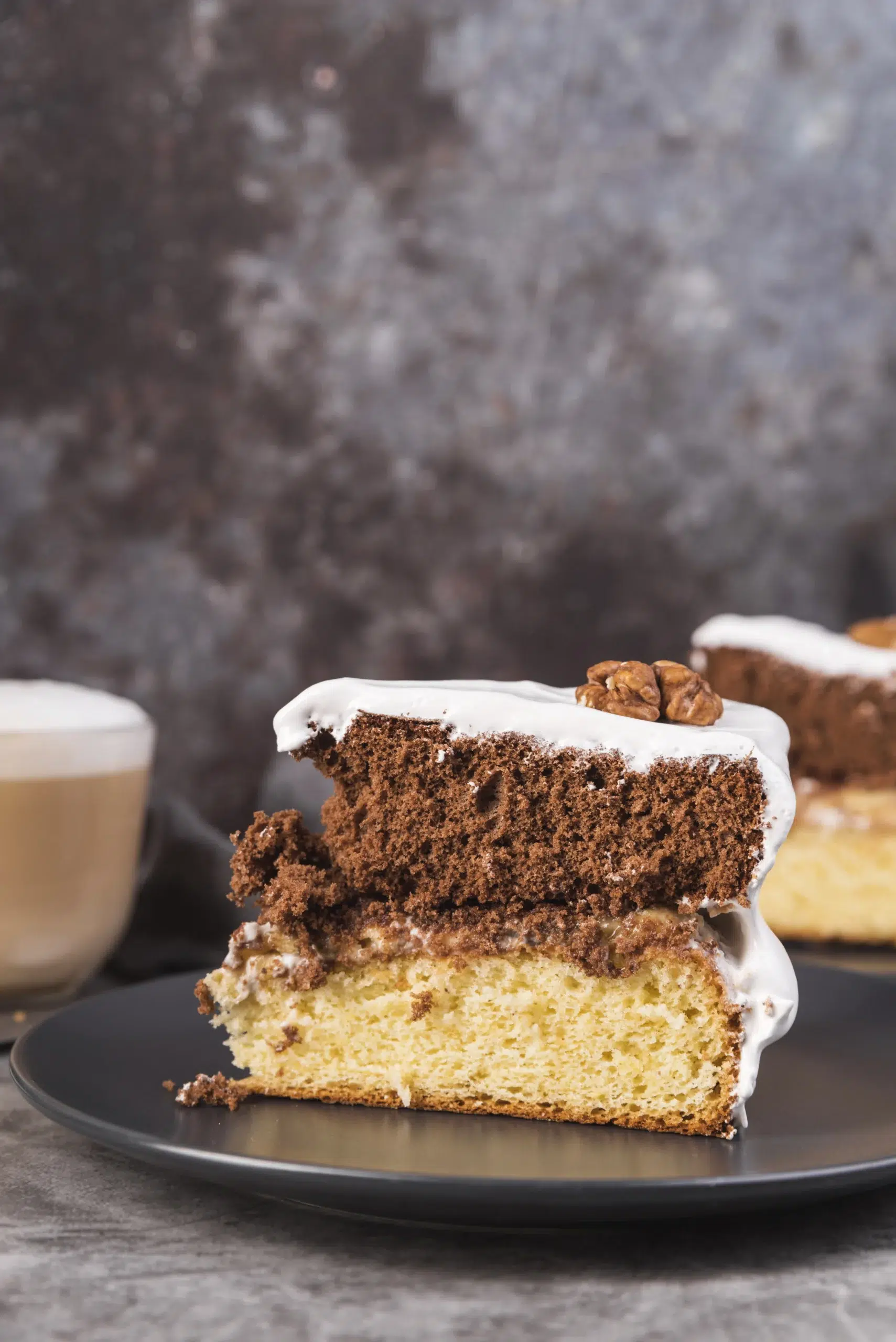Table of Contents
Cottage cheese has long been celebrated as a versatile, protein-packed dairy product, but have you ever considered baking it? Baked cottage cheese is a simple yet transformative way to enjoy this nutrient-rich food. By taking it from the fridge to the oven, you can elevate its flavor and texture, creating a dish that is not only delicious but also highly adaptable to various culinary creations.
Baking cottage cheese gives it a warm, creamy consistency and enhances its natural flavors, making it an excellent base for both sweet and savory dishes. Whether you’re looking for a quick snack, a side dish, or even a main course, baked cottage cheese offers endless possibilities. From breakfast bowls to casseroles, this dish is a testament to how easy it is to turn a humble ingredient into something extraordinary.
What makes baked cottage cheese truly special is its health appeal. High in protein, low in carbohydrates, and packed with essential nutrients like calcium and B vitamins, it’s a favorite among fitness enthusiasts, dieters, and anyone seeking a wholesome, balanced diet. It’s also naturally gluten-free and can be tailored to fit various dietary preferences, from keto to vegetarian lifestyles.
For foodies, baked cottage cheese is a canvas waiting to be flavored. You can season it with herbs and spices for a savory twist, or add fruits and honey for a dessert-like treat. Its simplicity and versatility make it an exciting ingredient to experiment with in the kitchen.
In this blog post, we’ll explore everything you need to know about baked cottage cheese what it is, why it’s a nutritional powerhouse, how to make it, and creative ways to enjoy it. Whether you’re a seasoned cook or a beginner, this guide will help you turn baked cottage cheese into a star ingredient in your culinary repertoire. Let’s dive in!
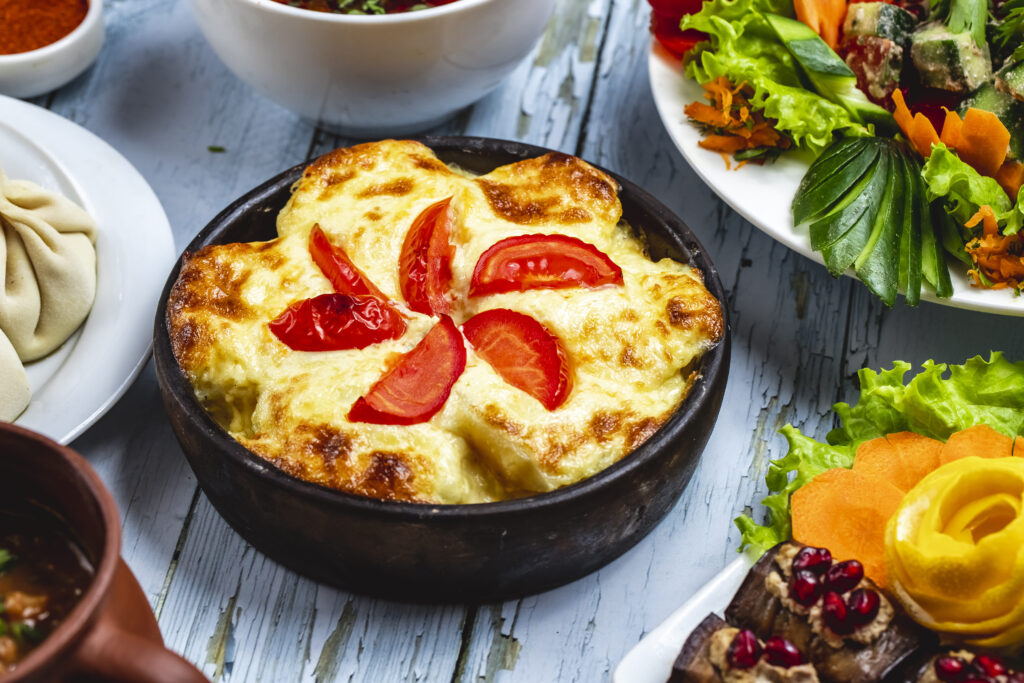
What is Baked Cottage Cheese and Why Should You Try It?
Baked cottage cheese is a delicious and innovative way to enjoy one of the most versatile dairy products. While cottage cheese is often enjoyed straight from the tub as a topping or mix-in for salads and smoothies, baking it unlocks an entirely new range of flavors and textures. But what exactly makes this ingredient so special, and why is baking it worth your time? Let’s dive into its characteristics and appeal.
Understanding Cottage Cheese
Overview of Cottage Cheese as a Versatile Ingredient
Cottage cheese is a fresh dairy product made by curdling milk and separating the curds from the whey. Its mild flavor and creamy, slightly lumpy texture make it an incredibly versatile ingredient that can be used in a variety of dishes. Unlike aged cheeses, cottage cheese doesn’t go through a fermentation process, which gives it a light and fresh taste. It’s available in different fat levels (regular, low-fat, and non-fat), catering to a wide range of dietary needs.
From savory dishes like salads and dips to sweet pairings with fruits or honey, cottage cheese seamlessly adapts to your culinary imagination. Its neutral taste allows it to take on the flavors of the ingredients it’s paired with, making it a favorite among cooks and bakers alike.
Nutritional Benefits of Cottage Cheese
One of the main reasons cottage cheese has gained popularity is its impressive nutritional profile. It’s a powerhouse of protein, which is essential for muscle growth, repair, and satiety. A single serving of cottage cheese can contain up to 15–20 grams of protein, depending on the variety.
Additionally, it’s low in carbohydrates, making it an ideal choice for those following low-carb or ketogenic diets. Cottage cheese is also rich in essential nutrients such as:
- Calcium: Important for bone health and muscle function.
- B Vitamins: Especially B12, which supports energy production and brain health.
- Phosphorus: A key mineral for maintaining strong bones and teeth.
Its combination of low calories and high protein makes it perfect for weight management, post-workout recovery, or simply maintaining a balanced diet.
The Appeal of Baking Cottage Cheese
How Baking Transforms the Texture and Flavor
Baking cottage cheese takes its humble qualities to a whole new level. When exposed to heat, cottage cheese undergoes a delightful transformation: its curds firm up slightly while maintaining a soft, creamy interior. The baking process also brings out its natural richness and enhances its subtle flavors, creating a warm and comforting dish that is as enjoyable on its own as it is in recipes.
For those who aren’t fans of the cold, lumpy texture of raw cottage cheese, baking offers a completely different experience. The curds meld together, creating a smooth and cohesive texture that resembles a cross between ricotta and cream cheese. Additionally, the golden crust that forms during baking adds an appealing visual and textural element.
Popular Uses of Baked Cottage Cheese in Meals
Baked cottage cheese is incredibly versatile and can be used in numerous ways to elevate your meals:
- As a Standalone Dish: Sprinkle with herbs, spices, or a drizzle of olive oil for a simple yet flavorful appetizer or snack.
- In Breakfast Bowls: Add honey, nuts, and berries to baked cottage cheese for a nutrient-packed morning treat.
- As a Casserole Ingredient: Use baked cottage cheese as a creamy layer in casseroles or lasagna for added richness.
- Low-Carb Pizza Base: Spread baked cottage cheese into a thin layer and top with your favorite pizza toppings.
- Pair with Proteins: Serve alongside grilled chicken or fish as a healthy side dish.
With its adaptable flavor, creamy texture, and nutritional value, baked cottage cheese is a must-try for anyone looking to enhance their cooking repertoire. Whether you’re a foodie or health-conscious eater, this simple dish can add variety, convenience, and satisfaction to your meals.
Health Benefits of Baked Cottage Cheese
Baked cottage cheese is not only a delicious dish but also a nutritional powerhouse that supports a healthy lifestyle. Whether you’re a fitness enthusiast, someone managing their weight, or simply looking for a nutrient-rich addition to your meals, baked cottage cheese has something to offer. Let’s explore the health benefits that make it a standout choice.
A Protein Powerhouse for Fitness Enthusiasts
Why Baked Cottage Cheese is Perfect for Muscle Recovery
Protein is essential for building and repairing muscles, especially after physical activity. Baked cottage cheese is an excellent source of high-quality protein, providing all nine essential amino acids that the body needs for optimal performance and recovery. A single serving of cottage cheese can provide up to 20 grams of protein, depending on the brand and type.
For fitness enthusiasts, the slow-digesting protein in cottage cheese, called casein, is particularly beneficial. Casein provides a steady release of amino acids over time, making it ideal for promoting muscle repair while you sleep or between meals. By baking cottage cheese, you can enjoy it as a warm, satisfying snack or meal that fuels your body and supports your fitness goals.
Low-Carb and Weight-Loss Friendly
How It Fits Into Keto, Paleo, and Other Low-Carb Diets
Baked cottage cheese is naturally low in carbohydrates, making it a perfect fit for keto, paleo, and other low-carb lifestyles. With just a few grams of carbs per serving, it allows you to enjoy a hearty, filling dish without worrying about spiking your blood sugar levels.
For those aiming to lose weight, baked cottage cheese is also a great option because of its high protein content. Protein is known to increase feelings of fullness, reduce appetite, and support fat loss by preserving lean muscle mass during weight loss. Its versatility means you can prepare it in many ways to suit your dietary preferences, whether as a savory side dish or a sweet treat.
Packed with Essential Nutrients
Vitamins and Minerals in Baked Cottage Cheese
Baked cottage cheese is more than just a source of protein it’s also rich in essential vitamins and minerals that contribute to overall health:
- Calcium: Essential for strong bones and teeth, calcium in baked cottage cheese supports muscle function and nerve transmission.
- Phosphorus: Works alongside calcium to maintain healthy bones and energy production.
- Vitamin B12: Vital for red blood cell formation, energy metabolism, and brain health.
- Riboflavin (Vitamin B2): Supports energy production and helps convert food into fuel.
- Selenium: A powerful antioxidant that protects cells from damage and supports immune function.
- Zinc: Helps boost immunity, supports wound healing, and maintains a healthy metabolism.
By incorporating baked cottage cheese into your diet, you’re not just indulging in a flavorful dish you’re nourishing your body with nutrients that promote overall well-being. Plus, because it’s naturally gluten-free and available in various fat content levels, it’s accessible to a wide range of dietary needs.
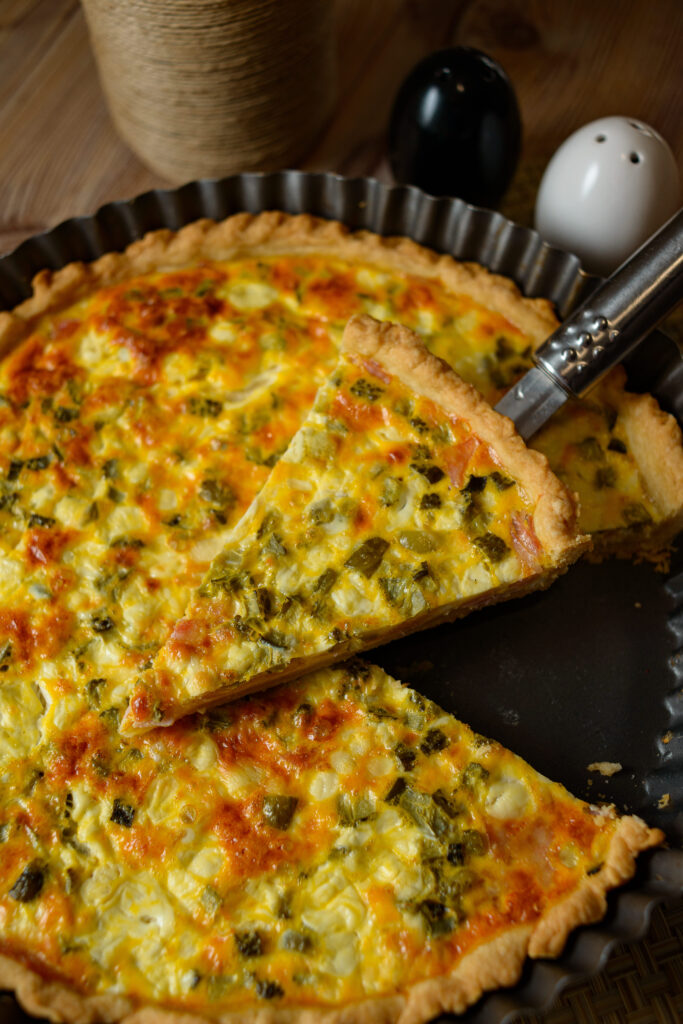
How to Make Perfectly Baked Cottage Cheese (Step-by-Step Recipe)
Baked cottage cheese is incredibly simple to make, but mastering the process ensures you get the perfect texture and flavor every time. Whether you’re preparing it as a standalone dish or using it as part of a larger recipe, this guide will help you create perfectly baked cottage cheese with ease.
Ingredients You’ll Need
Before you start, gather these basic ingredients. Feel free to adjust them to suit your preferences:
- Cottage Cheese: Choose full-fat, low-fat, or fat-free cottage cheese depending on your dietary needs. Full-fat varieties yield creamier results.
- Seasonings: Salt and pepper are staples, but you can get creative with your seasonings. Consider garlic powder, paprika, or Italian seasoning for a savory twist.
- Optional Toppings:
- Herbs: Fresh parsley, thyme, dill, or chives.
- Veggies: Diced bell peppers, cherry tomatoes, or spinach.
- Cheese: Sprinkle grated Parmesan, cheddar, or mozzarella for a cheesy crust.
- Sweet Additions: Honey, cinnamon, or a drizzle of maple syrup if you prefer a dessert-like version.
Easy Recipe Instructions
Follow these simple steps to bake cottage cheese to perfection:
Preheat Your Oven
Set your oven to 375°F (190°C). This temperature ensures the cottage cheese bakes evenly without drying out or burning. While the oven is preheating, lightly grease a baking dish or line it with parchment paper for easy cleanup.
Prepare and Season the Cottage Cheese
- Drain any excess liquid from the cottage cheese to prevent the dish from becoming watery during baking.
- Transfer the cottage cheese into a mixing bowl.
- Add your chosen seasonings and mix thoroughly. If you’re using savory toppings like veggies or herbs, fold them in gently. For a sweet version, stir in ingredients like cinnamon or honey.
- Spread the seasoned cottage cheese evenly into your prepared baking dish. For added texture, sprinkle your choice of shredded cheese or breadcrumbs on top.
Bake to Perfection
- Place the dish in the preheated oven.
- Bake for 25–30 minutes, or until the cottage cheese is set and a golden crust forms on top.
- Remove from the oven and let it cool slightly before serving. This helps the flavors meld and makes it easier to serve.
Tips for Success
Ensuring the Right Consistency
- To achieve a creamy texture, avoid over-draining the cottage cheese. Retaining a small amount of moisture helps it stay soft and prevents it from becoming too dry during baking.
- For an extra smooth result, blend the cottage cheese briefly before baking to remove lumps.
Avoiding Common Mistakes Like Over-Baking
- Over-baking can make the dish dry and rubbery. Keep an eye on it during the last 5–10 minutes and remove it as soon as the edges are golden and the center is firm.
- If you notice the top browning too quickly, cover the dish with aluminum foil for the remaining bake time.
Experiment with Flavors and Textures
- Layer the cottage cheese with marinara sauce or roasted vegetables for a baked lasagna-inspired dish.
- Try adding a dollop of pesto or a sprinkle of chili flakes before serving for a flavor boost.
5 Creative Ways to Use Baked Cottage Cheese
Baked cottage cheese is a versatile dish that can easily adapt to different meals, from snacks to hearty dinners. Its creamy texture and mild flavor make it an excellent base for experimenting with flavors and combinations. Here are five creative ways to incorporate baked cottage cheese into your culinary routine.
As a Healthy Snack
Baked cottage cheese makes a convenient and nutritious snack that can be paired with various accompaniments:
- Pair with Crackers: Spread a scoop of warm baked cottage cheese onto whole-grain crackers for a satisfying, protein-packed bite. Add a sprinkle of freshly chopped herbs or a dash of chili flakes for extra flavor.
- Serve with Veggies: Use baked cottage cheese as a dip for fresh-cut vegetables like carrots, cucumber, or bell peppers. Its creamy texture makes it an excellent substitute for traditional dips like hummus or ranch.
- Top with Spices: For a quick and simple snack, bake cottage cheese with a sprinkle of za’atar, paprika, or everything bagel seasoning.
This snack is not only easy to prepare but also provides a boost of energy, perfect for keeping hunger at bay between meals.
In Breakfast Bowls
Transform baked cottage cheese into a delightful breakfast option by combining it with sweet or savory toppings:
- Sweet Bowls: Add a dollop of baked cottage cheese to a bowl of fresh fruits like berries, bananas, or diced apples. Sprinkle with granola, chia seeds, or nuts, and drizzle with honey or maple syrup for a nutritious, dessert-like breakfast.
- Savory Bowls: Combine baked cottage cheese with sautéed spinach, roasted tomatoes, and a poached egg for a hearty, savory breakfast bowl. Add a pinch of salt and pepper or a splash of hot sauce for a flavor boost.
These breakfast bowls are easy to customize and packed with protein, making them an excellent way to start the day.
As a Low-Carb Pizza Base
For those on a low-carb diet, baked cottage cheese can serve as an innovative and healthy pizza base:
- Prepare the Base: Spread baked cottage cheese into a thin, even layer on parchment paper or a greased baking tray. Bake until firm and slightly golden.
- Add Toppings: Once the base is baked, top it with marinara sauce, shredded mozzarella, and your favorite pizza toppings, such as pepperoni, mushrooms, or olives.
- Finish Baking: Return it to the oven and bake until the toppings are melted and bubbly.
This low-carb alternative is a great way to enjoy pizza without the guilt, and the baked cottage cheese provides a creamy, flavorful foundation.
In Casseroles or Lasagna
Baked cottage cheese is an excellent ingredient for adding creaminess and depth to casseroles and lasagna:
- Layering in Lasagna: Use baked cottage cheese as a substitute for ricotta in your lasagna recipe. Spread it between layers of pasta, marinara sauce, and cheese for a rich and creamy texture.
- In Casseroles: Add baked cottage cheese to casseroles like vegetable gratins or chicken and broccoli bakes. Its creamy consistency helps bind the ingredients together and adds a velvety finish to the dish.
This approach not only enhances the flavor of these dishes but also boosts their protein content.
As a Side Dish for Dinner
Baked cottage cheese can be served as a standalone side dish or paired with other components for a complete meal:
- Pair with Roasted Veggies: Serve a scoop of baked cottage cheese alongside roasted vegetables like asparagus, zucchini, or Brussels sprouts. The creaminess of the cheese complements the caramelized flavors of the veggies.
- Accompany Lean Proteins: Pair baked cottage cheese with grilled chicken, fish, or tofu for a balanced meal. Add a sprinkle of fresh herbs like parsley or dill to tie the flavors together.
- Stuffed Peppers: Use baked cottage cheese as a filling for bell peppers, combining it with quinoa, ground turkey, or chopped spinach for a hearty side dish.
This versatile side dish is ideal for both casual dinners and elegant gatherings.
Frequently Asked Questions About Baked Cottage Cheese
If you’re new to baking cottage cheese or looking to get the most out of this versatile dish, you may have some questions. Here are answers to some common queries to help you perfect your baked cottage cheese experience.
Can I Use Low-Fat Cottage Cheese for Baking?
Yes, you can absolutely use low-fat cottage cheese for baking. It’s a great option for those looking to reduce their calorie or fat intake while still enjoying the dish. However, there are a few things to keep in mind:
- Texture and Creaminess: Low-fat cottage cheese tends to have a thinner consistency compared to full-fat varieties, which can affect the creaminess of your baked dish. To compensate, you can add a small amount of cream, yogurt, or shredded cheese for a richer texture.
- Moisture Content: Low-fat cottage cheese may contain more liquid, so draining it thoroughly before baking is essential to avoid a watery dish.
- Flavor: The flavor of low-fat cottage cheese is milder, so consider enhancing it with robust seasonings or toppings like herbs, spices, or a sprinkle of Parmesan.
With these tips, you can make delicious baked cottage cheese using low-fat options without sacrificing quality.
How Do I Store Leftover Baked Cottage Cheese?
Storing leftovers properly ensures your baked cottage cheese stays fresh and flavorful for future meals. Follow these steps:
- Cool Completely: Allow the baked cottage cheese to cool to room temperature before storing to prevent condensation, which can make it watery.
- Use Airtight Containers: Transfer the dish to an airtight container or cover it tightly with plastic wrap or aluminum foil.
- Refrigerate: Store in the refrigerator for up to 3–4 days. For best results, consume it within this timeframe to maintain its flavor and texture.
- Reheat: To reheat, place the leftovers in an oven-safe dish and warm in the oven at 350°F (175°C) for about 10–15 minutes. You can also reheat small portions in the microwave, but be cautious to avoid drying it out.
If you’d like to store it for longer, baked cottage cheese can also be frozen. Wrap it tightly in plastic wrap, then place it in a freezer-safe container. Thaw overnight in the refrigerator before reheating.
What Are Some Creative Toppings to Try?
Baked cottage cheese is like a blank canvas that can be customized with endless topping combinations. Here are some creative ideas to inspire you:
- Savory Toppings:
- Fresh herbs like dill, parsley, or chives.
- Spices such as smoked paprika, cumin, or za’atar.
- Sautéed vegetables like spinach, mushrooms, or caramelized onions.
- Crumbled bacon or cooked sausage for a protein boost.
- A drizzle of pesto or hot sauce for added flavor.
- Sweet Toppings:
- Fresh fruits like berries, peaches, or sliced bananas.
- A sprinkle of granola or crushed nuts for crunch.
- Honey, maple syrup, or agave for natural sweetness.
- A dusting of cinnamon or nutmeg for warm, comforting flavors.
These toppings allow you to tailor the dish to your taste and make it suitable for any meal or occasion.
Is Baked Cottage Cheese Suitable for Vegans?
Traditional baked cottage cheese is not suitable for vegans, as it is made from dairy. However, there are dairy-free alternatives that mimic the texture and flavor of cottage cheese, allowing vegans to enjoy a similar dish. Some options include:
- Vegan Cottage Cheese: Made from plant-based ingredients like tofu, cashews, or almonds, these alternatives are readily available in many grocery stores or can be made at home.
- Plant-Based Yogurt: Combine a thick, unsweetened plant-based yogurt (such as almond or coconut) with nutritional yeast, lemon juice, and seasonings to replicate the tangy flavor of cottage cheese.
- Other Vegan Cheeses: Use ricotta-style vegan cheese or blend soaked cashews with water, lemon juice, and salt for a creamy, bake-worthy substitute.
When baking, these alternatives work well with the same seasonings and toppings, making it easy to create a vegan-friendly version of baked cottage cheese.
Conclusion
Baked cottage cheese is a delicious, healthy, and versatile dish that offers endless possibilities for customization. Whether you use full-fat or low-fat cottage cheese, experiment with creative toppings, or even explore vegan alternatives, there’s a way for everyone to enjoy this nutritious and flavorful dish.
We hope this guide has inspired you to try baking cottage cheese and discover the many ways it can enhance your meals. Share your experiences, favorite recipes, and creative ideas in the comments. Don’t forget to explore our other recipes for more inspiration, and let us know how you make baked cottage cheese your own!
